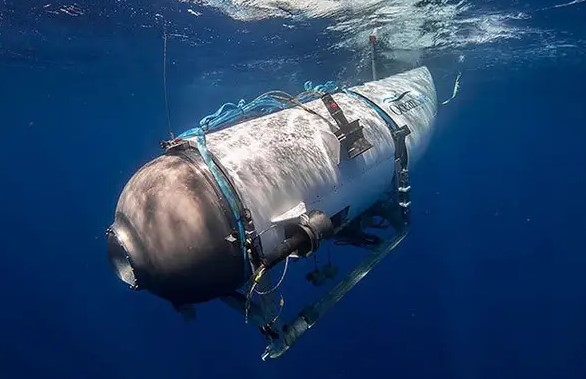Introduction
Deep beneath the ocean’s surface lies a world of wonder and mystery that has captivated humankind for centuries. With advancements in technology, we have been able to explore the depths like never before. However, even the most cutting-edge expeditions can encounter unforeseen challenges, resulting in tragic events that shake the maritime community to its core. One such incident that sent shockwaves through the industry was the “Titan sub implosion,” a fateful event that unfolded during a daring dive by the renowned ocean exploration company, OceanGate.
The Ill-Fated Dive
In the early hours of an otherwise ordinary day, OceanGate’s state-of-the-art Titan submersible embarked on a mission to explore the enigmatic depths of the ocean. Equipped with advanced scientific instruments and manned by a team of skilled researchers, the submersible descended into the abyss with great anticipation and excitement.
The objective of the dive was to investigate a region known for its unique underwater geological formations and extraordinary marine life. It was an ambitious undertaking, driven by a thirst for knowledge and a desire to unravel the mysteries lurking beneath the surface.
The Implosion
As the Titan submersible descended deeper into the ocean, tragedy struck. Without warning, the vessel experienced an implosion—an event where the external pressure exceeded the submersible’s structural integrity. The crushing force of the water led to the collapse of the submersible, causing irreparable damage and rendering it inoperable.
The immediate aftermath of the implosion was chaotic. The OceanGate team, driven by their commitment to safety and swift emergency response protocols, acted decisively to ensure the well-being of the crew. Fortunately, all personnel aboard the submersible were successfully rescued, albeit shaken by the harrowing experience.
Investigation and Lessons Learned
The Titan sub implosion prompted an extensive investigation by OceanGate, industry experts, and regulatory authorities. The objective was to determine the cause of the incident and prevent similar occurrences in the future.
Preliminary findings revealed that a combination of factors contributed to the submersible’s implosion. It was discovered that an unforeseen structural flaw, exacerbated by an unexpected surge in water pressure, played a significant role in the tragic event. However, the investigation is ongoing, and final conclusions are yet to be reached.
OceanGate, known for its commitment to safety and innovation, has pledged to incorporate the lessons learned from this incident into their future endeavours. The company is intensifying its focus on rigorous testing, enhanced engineering designs, and redundant safety measures to ensure the well-being of its crews and the success of future exploration missions.
Implications for Ocean Exploration
The Titan sub implosion serves as a sombre reminder of the inherent risks associated with venturing into the unexplored depths of the ocean. It underscores the importance of meticulous planning, continuous innovation, and ongoing collaboration within the scientific and engineering communities.
While the incident highlights the potential dangers involved, it is crucial to acknowledge that exploration and discovery are integral to expanding our understanding of the world beneath the waves. The resolve to overcome challenges and improve safety measures will undoubtedly drive future advancements in ocean exploration technology.
OceanGate’s unfortunate experience with the Titan sub implosion has sparked conversations within the industry, leading to a renewed focus on safety protocols and engineering advancements. The incident has prompted researchers, engineers, and manufacturers to collaborate on developing stronger and more resilient submersibles capable of withstanding extreme conditions at great depths.
Lessons for the Future
As the investigation into the Titan sub implosion continues, the ocean exploration community is reflecting on the lessons learned and how they can be applied moving forward. Some key takeaways include:
- Robust Design and Testing: Submersibles must undergo rigorous design and testing processes to ensure their structural integrity and resilience under extreme conditions. Improved engineering standards and comprehensive safety protocols are crucial.
- Pressure Management Systems: Developing advanced pressure management systems is vital to prevent implosions. These systems should be capable of adapting to varying pressure conditions and providing real-time feedback to the crew.
- Crew Safety and Training: Prioritizing crew safety through comprehensive training programs and emergency response protocols is essential. Crew members should be equipped with the knowledge and skills to handle unexpected situations effectively.
- Collaborative Research: Encouraging collaboration between industry stakeholders, research institutions, and regulatory bodies is crucial to drive advancements in ocean exploration technology. Sharing knowledge and experiences can help prevent incidents and improve safety standards.
Conclusion
The Titan sub implosion was a tragic event that cast a shadow over OceanGate’s ambitious dive. However, it also serves as a catalyst for introspection and progress. By embracing the lessons learned from this incident, the marine exploration community can foster safer, more resilient technologies and unlock the wonders that lie hidden in the vast depths of our planet’s oceans.
As we move forward, it is essential to remember that exploring the ocean comes with inherent risks. Yet, it is through our collective dedication to innovation, safety, and collaboration that we can continue to push the boundaries of knowledge, unveiling the mysteries that await us beneath the waves.

